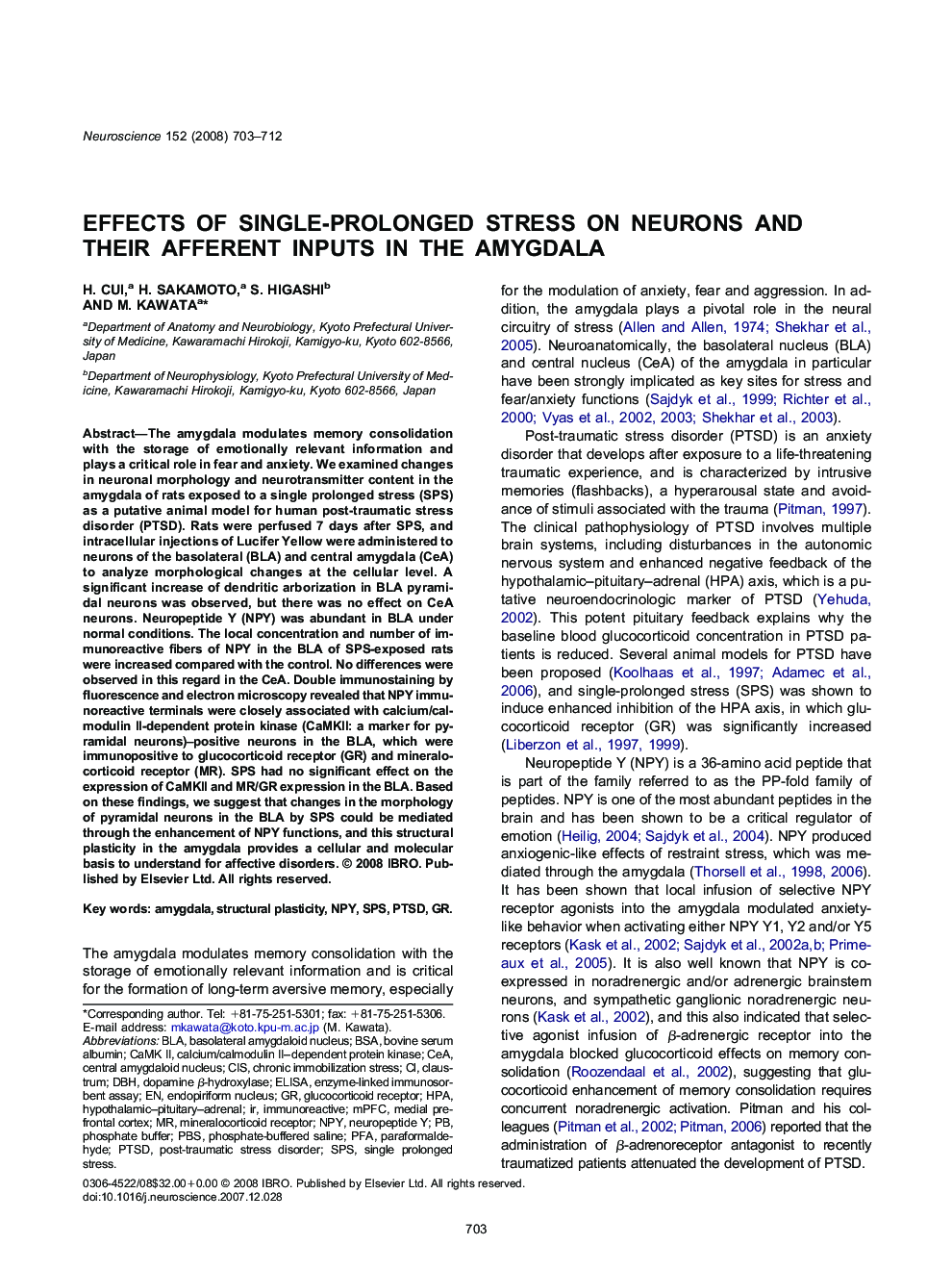| کد مقاله | کد نشریه | سال انتشار | مقاله انگلیسی | نسخه تمام متن |
|---|---|---|---|---|
| 4340898 | 1295813 | 2008 | 10 صفحه PDF | دانلود رایگان |

The amygdala modulates memory consolidation with the storage of emotionally relevant information and plays a critical role in fear and anxiety. We examined changes in neuronal morphology and neurotransmitter content in the amygdala of rats exposed to a single prolonged stress (SPS) as a putative animal model for human post-traumatic stress disorder (PTSD). Rats were perfused 7 days after SPS, and intracellular injections of Lucifer Yellow were administered to neurons of the basolateral (BLA) and central amygdala (CeA) to analyze morphological changes at the cellular level. A significant increase of dendritic arborization in BLA pyramidal neurons was observed, but there was no effect on CeA neurons. Neuropeptide Y (NPY) was abundant in BLA under normal conditions. The local concentration and number of immunoreactive fibers of NPY in the BLA of SPS-exposed rats were increased compared with the control. No differences were observed in this regard in the CeA. Double immunostaining by fluorescence and electron microscopy revealed that NPY immunoreactive terminals were closely associated with calcium/calmodulin II-dependent protein kinase (CaMKII: a marker for pyramidal neurons)–positive neurons in the BLA, which were immunopositive to glucocorticoid receptor (GR) and mineralocorticoid receptor (MR). SPS had no significant effect on the expression of CaMKII and MR/GR expression in the BLA. Based on these findings, we suggest that changes in the morphology of pyramidal neurons in the BLA by SPS could be mediated through the enhancement of NPY functions, and this structural plasticity in the amygdala provides a cellular and molecular basis to understand for affective disorders.
Journal: Neuroscience - Volume 152, Issue 3, 27 March 2008, Pages 703–712